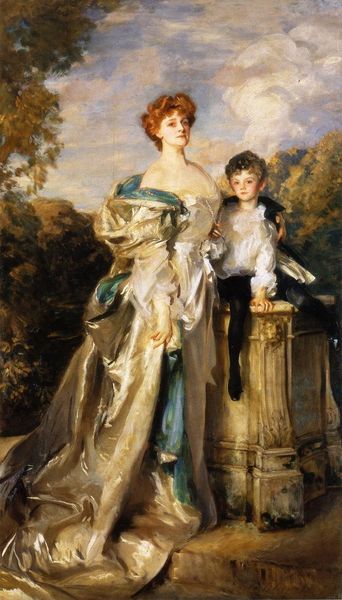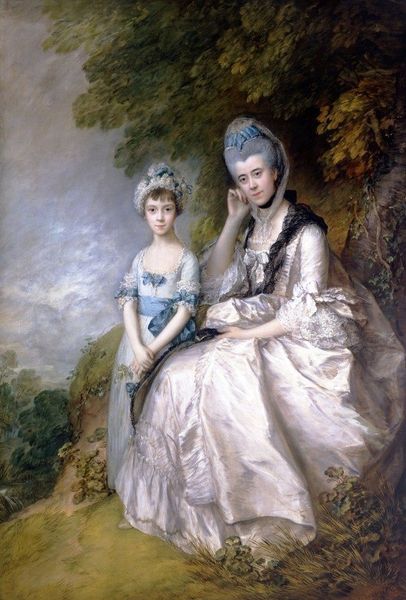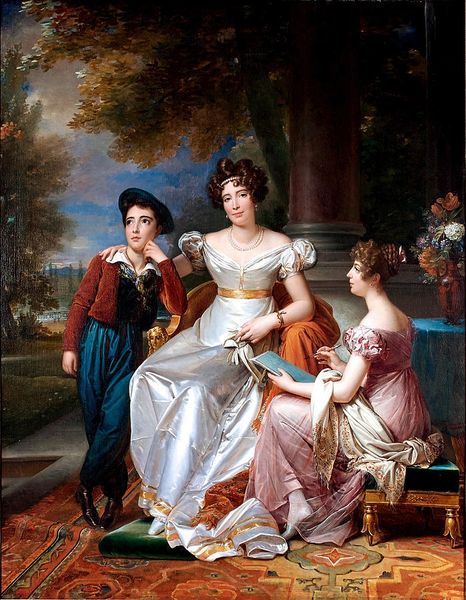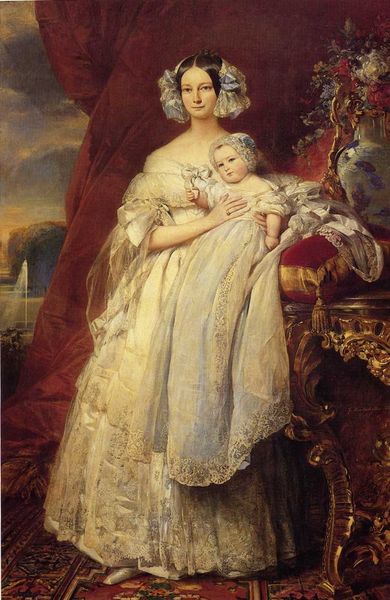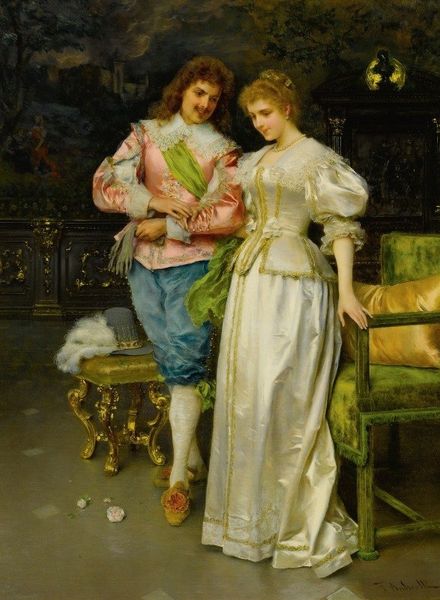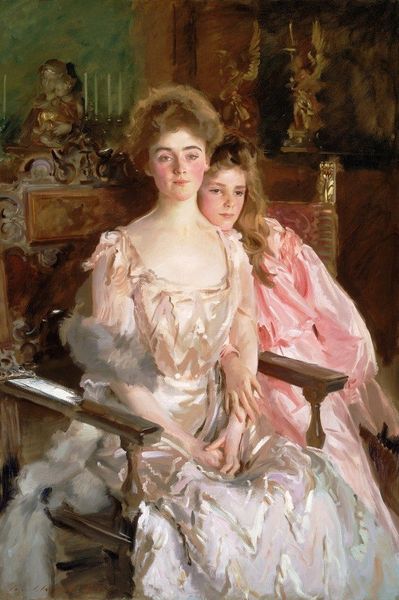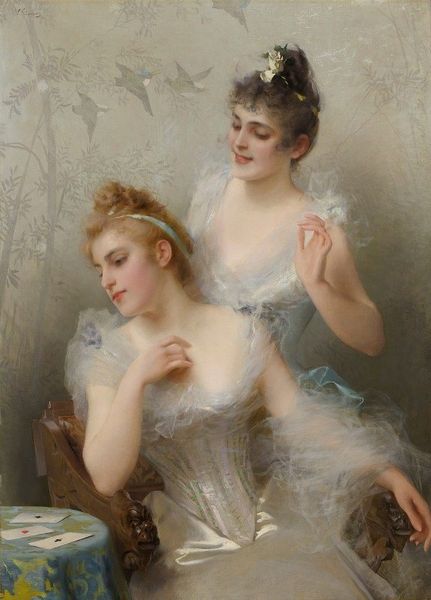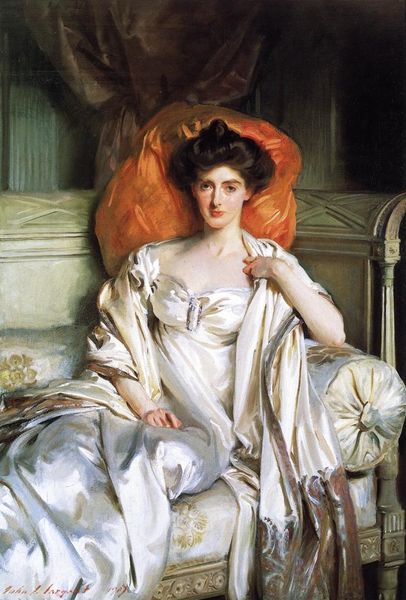
Dimensions: 50.8 x 66.7 cm
Copyright: Public domain
Curator: Looking at this image, my first thought is, well, “opulence.” It's thick with textures, like heavy cream. Editor: Indeed. What we have here is Franz Xaver Winterhalter’s "The Cousins: Queen Victoria and Victoire, Duchesse de Nemours," rendered in 1852 using oil paint. Curator: Right, oil is definitely lending that rich feel, that gloss that seems to coat everything. Notice how every fold in their garments gets its own little shadow? It amplifies the texture to almost grotesque heights, in a very Victorian way. And all the lace, which suggests industry as much as beauty. Editor: Absolutely. The proliferation of lace – look closely and you see layers upon layers – speaks volumes about Victorian England's textile manufacturing prowess, facilitated by complex machinery and global trade networks. This excess also suggests power through access to specialized production processes. As to symbolic continuities, the flowers woven through the Duchesses’ hair remind one of earlier floral headdresses denoting fertility and beauty, updated for the modern queenly era. Curator: It’s interesting you say that because for me, flowers act as a link back to nature – softening an image of almost manufactured luxury. But still… I struggle a little here, how can we be sure that’s nature at play when every single element is meticulously chosen to create and sustain that elevated presentation? Look at their skin - the application emphasizes its artificial, alabaster quality, almost draining the life from their figures. Editor: An interesting reading. Perhaps Winterhalter highlights the contrast between manufactured objects, and things that cannot be owned – the backdrop, alluding to the pastoral Romantic vision, highlights by comparison the role these objects and appearances have in establishing their identity as women and sovereigns. And beyond that – this image certainly cemented their role, not only through visual beauty, but their familial ties through public visual culture. Curator: True. Even within the highly orchestrated visual space Winterhalter offers, there is a subtle narrative about status, legacy, and the pressures that arise when selfhood blends entirely with the symbolic image of statehood. Editor: A legacy crafted meticulously in layers of paint, industry and carefully selected symbols, reflecting the complexities of royalty and reputation in a changing world.
Comments
No comments
Be the first to comment and join the conversation on the ultimate creative platform.
